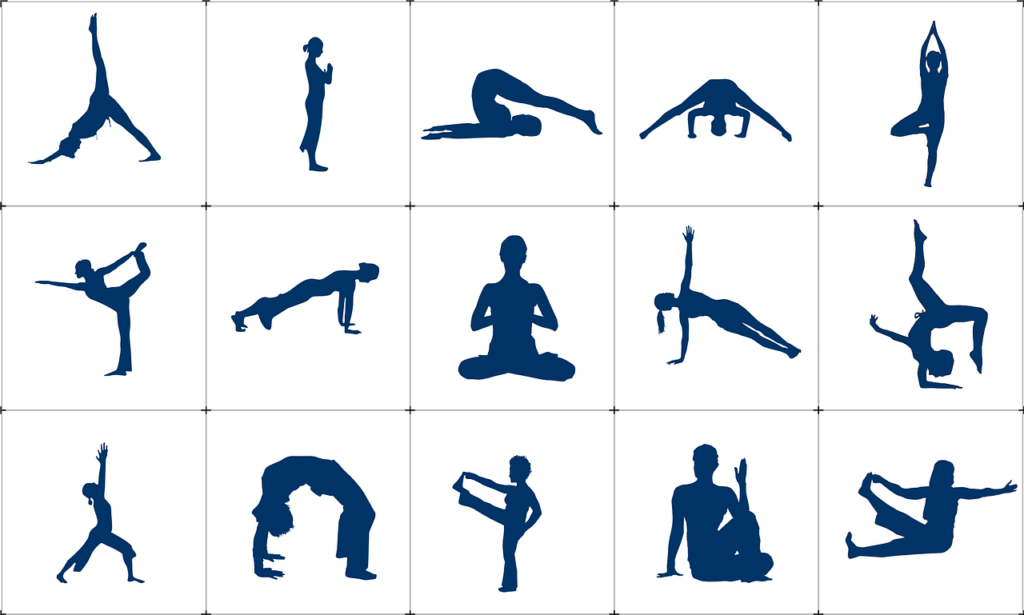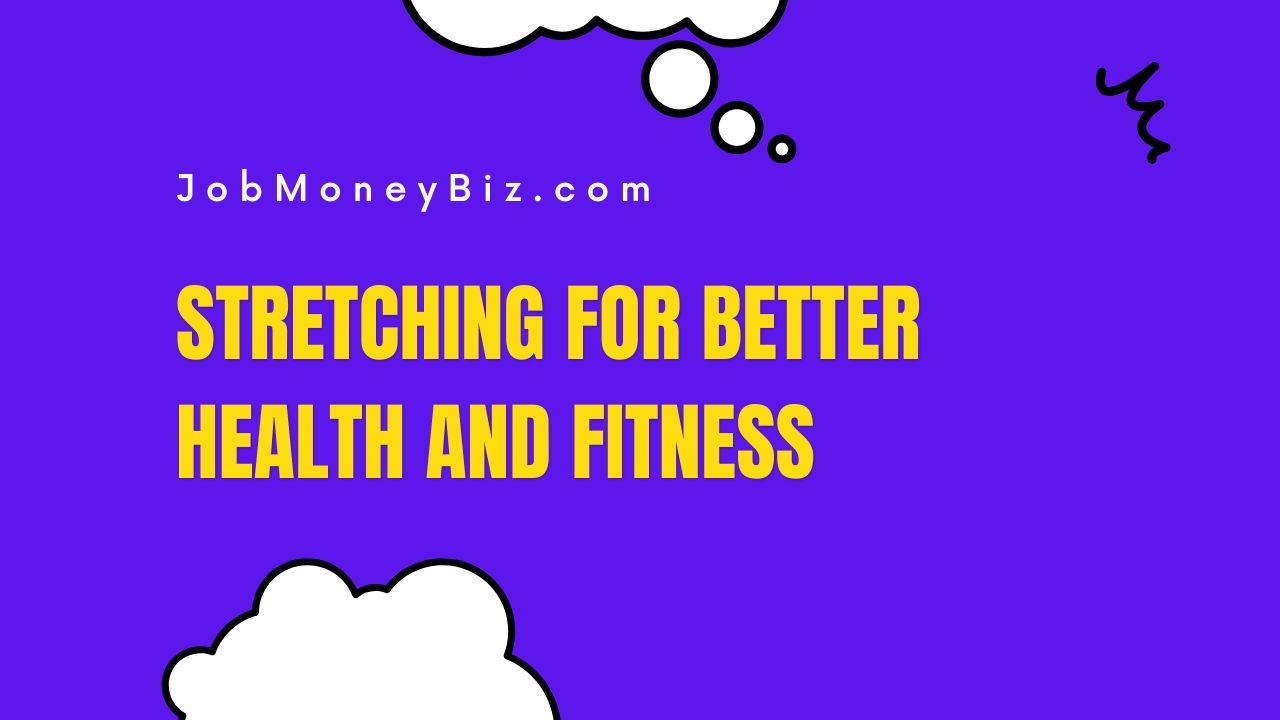A physically healthy and fit person has a better chance to build a successful life and career. Welcome to this guide on stretching for better health and fitness!
Stretching is a fundamental practice that has been utilized for centuries to improve flexibility, prevent injuries, and enhance overall well-being.
In this comprehensive article, we will explore the various aspects of stretching, its impact on health and fitness, and how you can optimize your stretching routine for maximum results.
The Importance of Stretching for Better Health and Fitness
Stretching is not just an activity reserved for athletes and yogis; it is a practice that can benefit people of all ages and activity levels. From reducing muscle tension and increasing blood circulation to enhancing joint flexibility and promoting relaxation, stretching plays a vital role in maintaining a healthy body and mind. By making stretching a regular part of your fitness regimen, you can experience the following benefits:
- Improved Flexibility: Stretching helps lengthen and loosen muscles, improving overall flexibility and range of motion. Increased flexibility can lead to better athletic performance and reduced risk of injuries.
- Enhanced Blood Circulation: Engaging in stretching exercises improves blood flow to the muscles, providing them with essential nutrients and oxygen. This increased circulation can aid in faster muscle recovery after workouts.
- Injury Prevention: By increasing the suppleness of muscles and connective tissues, stretching reduces the risk of strains, sprains, and other exercise-related injuries.
- Stress Relief: Stretching encourages the release of endorphins, also known as the “feel-good” hormones, which help reduce stress and promote relaxation.
- Posture Correction: Regular stretching can help correct imbalances in muscles, which, in turn, improves posture and reduces the strain on the spine and surrounding structures.
- Enhanced Athletic Performance: Athletes who incorporate dynamic stretching into their warm-up routines may experience improved performance and reduced muscle soreness.
- Better Mind-Body Connection: Stretching requires focus and concentration, promoting a deeper mind-body connection that can contribute to overall well-being.
Common Stretching Techniques for Better Health and Fitness

Static Stretching
Static stretching involves holding a stretch for a prolonged period, usually between 15 to 60 seconds. This type of stretching is ideal for increasing flexibility and is often performed after a workout when muscles are warm. Examples of static stretches include:
- Hamstring Stretch: Sit on the floor with one leg extended, bend the other leg, and lean forward to feel the stretch in the back of the extended leg.
- Chest Opener: Stand tall with your feet shoulder-width apart, clasp your hands behind your back, and lift your arms while squeezing your shoulder blades together.
Dynamic Stretching
Dynamic stretching involves moving parts of your body through a full range of motion, mimicking the movements of your workout or activity. Dynamic stretching is typically done as a warm-up before exercise to increase blood flow and prepare the body for more intense movements. Examples of dynamic stretches include:
- Leg Swings: Stand beside a wall, holding onto it for support, and swing one leg forward and backward, gradually increasing the range of motion.
- Arm Circles: Extend your arms out to the sides and make circular motions with your arms, gradually increasing the size of the circles.
PNF Stretching
PNF (Proprioceptive Neuromuscular Facilitation) stretching is an advanced technique that involves a combination of stretching and contraction of targeted muscles. This technique can help improve flexibility rapidly and is often used in rehabilitation settings. An example of PNF stretching is:
- Hold-Relax Stretch: To stretch the hamstring, lie on your back and lift one leg towards the ceiling. Push against a partner’s resistance for a few seconds, then relax and move the leg further into the stretch.
How to Create an Effective Stretching Routine?
To make the most of your stretching routine, it’s essential to create a well-rounded and effective plan. Here are some tips to guide you:
- Set Realistic Goals: Determine your fitness goals and tailor your stretching routine accordingly. Whether it’s increasing flexibility, alleviating muscle tension, or preparing for a specific sport, defining your objectives will help you stay motivated.
- Warm Up First: Always warm up your body before starting any stretching routine. Engage in light cardio exercises, such as jogging or jumping jacks, to increase blood flow to your muscles.
- Focus on Major Muscle Groups: Concentrate on stretching major muscle groups like the calves, thighs, hips, and shoulders. These areas are prone to tightness and can benefit greatly from stretching.
- Maintain Proper Form: Pay attention to your posture and alignment during stretches to prevent injury. Avoid overstretching and listen to your body’s signals.
- Breathe and Relax: While stretching, focus on deep breathing and try to relax into the stretch. Tensing up or holding your breath can hinder the effectiveness of the stretch.
- Be Consistent: Consistency is key to reaping the benefits of stretching. Aim to incorporate stretching into your daily routine, whether it’s part of your warm-up, cool-down, or a separate session.
FAQs about Stretching for Better Health and Fitness
- Q: How often should I stretch for better health and fitness?
- A: Ideally, you should aim to stretch at least 3 to 5 times a week. However, listen to your body and adjust the frequency based on your activity level and personal preferences.
- Q: Can stretching help with lower back pain?
- A: Yes, regular stretching can be beneficial for alleviating lower back pain. Focus on stretches that target the hamstrings, hip flexors, and lower back muscles.
- Q: Is it better to stretch before or after a workout?
- A: Both pre-workout (dynamic) and post-workout (static) stretching have their benefits. Dynamic stretching is best before a workout to warm up the muscles, while static stretching is ideal after a workout to enhance flexibility.
- Q: Can I stretch if I am not very flexible?
- A: Absolutely! Stretching is for everyone, regardless of their current flexibility level. Over time, consistent stretching can improve flexibility significantly.
- Q: Can I do stretching exercises during pregnancy?
- A: Yes, stretching can be safe and beneficial during pregnancy. However, it’s essential to consult with your healthcare provider and focus on gentle stretches that don’t put pressure on the abdomen.
- Q: Can stretching help reduce stress and anxiety?
- A: Yes, stretching encourages the release of endorphins, which can help reduce stress and anxiety. Additionally, the relaxation and mindfulness involved in stretching can have positive effects on mental well-being.
Conclusion
In conclusion, stretching is a powerful tool for enhancing your overall health and fitness. Incorporating stretching exercises into your daily routine can lead to improved flexibility, reduced risk of injuries, and increased relaxation.
Anupam M is blogging on this site on different aspects of technology, job, and business. He is an experienced IT professional with an Engineering degree from a premier NIT. Know more




